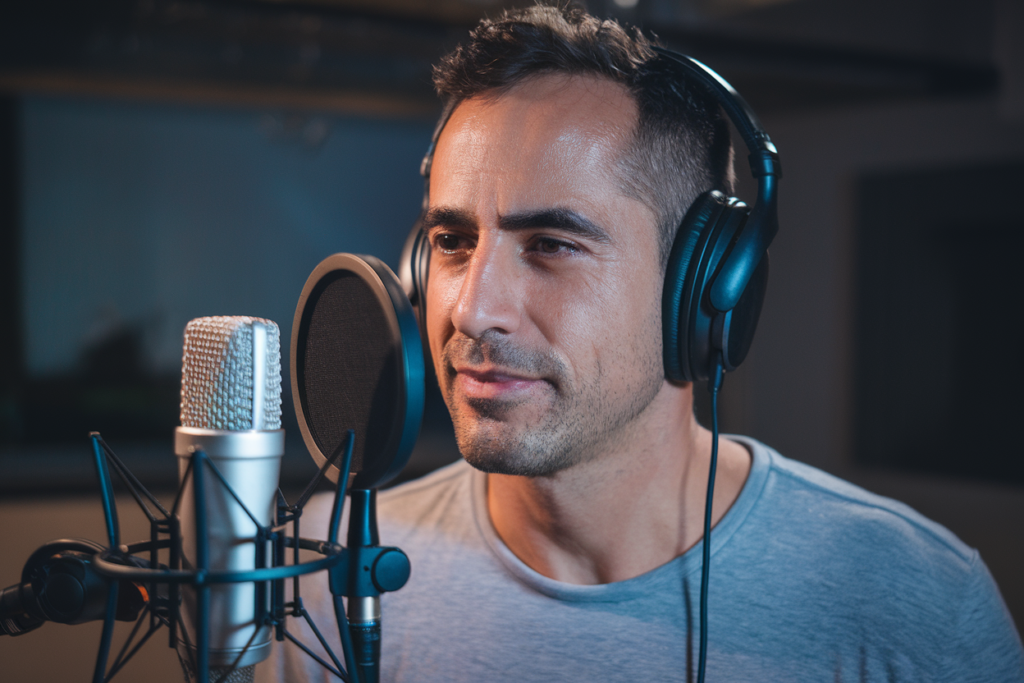Dubbing is an art that requires a perfect blend of skill and creativity, especially when it comes to Castilian Spanish. If you’re diving into the world of voice-over work, mastering lip sync techniques can elevate your performance and make your characters truly come alive. You want your audience to feel every emotion without being distracted by mismatched movements.
Key Takeaways
- Master Lip Sync Techniques: Effective lip syncing is crucial for aligning audio with visual cues, enhancing viewer immersion in Castilian Spanish dubbing.
- Understand Cultural Dynamics: Familiarity with regional accents, idioms, and cultural references improves authenticity and relatability in voice performances.
- Focus on Timing and Rhythm: Matching speech patterns to the original performance’s timing captures character intentions and emotional resonance.
- Utilize Phonetic Matching: Align vocal delivery with characters’ mouth movements by emphasizing vowel shapes and consonant clarity for more natural dialogue.
- Analyze Visual Cues: Incorporate facial expressions and body language into your voice work to create emotionally authentic portrayals that engage audiences.
Understanding Castilian Spanish Dubbing
Castilian Spanish dubbing requires a deep understanding of both language and culture. Mastering the nuances of this dialect enhances the effectiveness of voice performances, ensuring that they connect with the audience. Voice artists must focus on accurately conveying emotion while aligning their vocal delivery with visual cues.
Lip sync is crucial in dubbing. You need to synchronize your voice with the character’s mouth movements to maintain immersion. This technique demands precision and practice from voice actors, enabling them to create authentic portrayals that resonate emotionally.
Voice over talent should also consider cultural references within dialogue. Adapting these elements appropriately ensures that humor, idioms, or expressions remain relevant for the target audience. Your ability to interpret scripts can significantly impact how well a performance translates in Castilian Spanish.
Additionally, selecting the right tone and pacing is vital. The rhythm of speech often differs across languages; thus, recognizing these subtleties allows you to deliver lines naturally while matching character personalities. A skilled voice over artist adjusts their style based on context, whether it be dramatic or comedic.
Overall, effective Castilian Spanish dubbing hinges on skillful lip syncing combined with an acute awareness of cultural dynamics and speech patterns. Focus on honing these techniques to elevate your craft as a voice actor in this vibrant field.
Importance of Lip Sync in Dubbing
Lip sync plays a crucial role in dubbing, ensuring that the audio aligns perfectly with the on-screen dialogue. Effective lip syncing enhances viewer immersion, allowing audiences to connect with characters without distraction. Accurate synchronization between vocal delivery and visual cues elevates the overall quality of voiceover performances.
Timing and Rhythm
Timing influences how audiences perceive dialogue. Voice actors must match their speech patterns to the timing of the original performance, capturing nuances that reflect character intentions. Adjusting pacing ensures that emotions resonate appropriately within different scenes. Practicing with various media can help you understand rhythm variations across languages, improving your ability to adapt quickly during recording sessions.
Character Emotions and Expressions
Expressive voiceovers require aligning emotional delivery with visual expressions. Understanding character motivations allows you as a voice artist to convey feelings effectively through tone and inflection. Recognizing subtle differences in emotional expression is key; for instance, anger may demand sharper intonation while joy often requires a lighter touch. Focusing on these elements fosters authenticity in your performance, making characters relatable and engaging for viewers.
Techniques for Effective Lip Sync
Mastering lip sync techniques is crucial for voice actors aiming to deliver authentic performances in Castilian Spanish dubbing. Attention to detail enhances viewer immersion and elevates the overall quality of the project.
Phonetic Matching
Phonetic matching involves aligning your vocal delivery with the sounds produced by characters on screen. Focus on articulating words that closely resemble the original audio, ensuring that mouth movements synchronize with spoken dialogue. This technique allows you to maintain rhythm while delivering lines naturally. Consider these key points:
- Identify vowel shapes: Pay attention to how vowels are pronounced and match their phonetic qualities.
- Emphasize consonant clarity: Ensure consonants are distinct, as they often dictate mouth movement.
- Practice variations: Experiment with different phrases or synonyms that fit both contextually and phonetically.
Visual Cues and Body Language
Visual cues play a vital role in effective lip sync. Observing a character’s facial expressions and body language informs your vocal performance, enhancing emotional authenticity. Follow these strategies:
- Analyze character gestures: Note how physical actions correlate with dialogue, using them as prompts for emotion.
- Mirror emotions: Reflect the character’s feelings through your tone, pacing, and volume; this alignment fosters connection.
- Use eye contact effectively: Maintain focus on relevant visual elements when recording; it aids in delivering a more engaging performance.
By applying these techniques diligently, voice actors can master lip sync in Castilian Spanish dubbing, creating compelling narratives that resonate with audiences.
Challenges in Castilian Spanish Dubbing
Dubbing in Castilian Spanish presents unique challenges that require skill and adaptability from voice actors. Understanding these obstacles enhances the effectiveness of voiceover performances.
Regional Variations
Regional variations within Spain impact pronunciation, slang, and idiomatic expressions. You must recognize these differences to ensure authenticity. For instance, accents vary significantly between regions like Madrid and Andalusia. A voice artist should adapt their delivery according to target demographics to resonate with specific audiences effectively.
Cultural Nuances
Cultural nuances play a critical role in dubbing success. Voice talent must grasp local customs, humor, and references for accurate performance. Certain phrases may not translate directly or hold the same weight emotionally. Adjusting dialogue to reflect cultural contexts ensures that characters feel relatable and genuine for viewers. Familiarity with cultural storytelling techniques also contributes to a more engaging viewer experience, enhancing overall narrative immersion.
Conclusion
Mastering Castilian Spanish dubbing requires a blend of skill creativity and cultural awareness. By honing your lip sync techniques you can significantly enhance the viewer’s experience. It’s not just about matching words to mouth movements but also about conveying genuine emotion that resonates with the audience.
Understanding regional variations and cultural nuances will elevate your performances making them more relatable. As you practice techniques like phonetic matching and analyzing character gestures remember that each detail contributes to authenticity. Embrace these tips and continue refining your craft to create compelling narratives that captivate viewers across diverse backgrounds. Your dedication will set you apart in this vibrant field of voice acting.
Frequently Asked Questions
What is dubbing in Castilian Spanish?
Dubbing in Castilian Spanish involves replacing the original voice track of a film or show with a new performance in Spanish. This process requires voice artists to match their vocal delivery with the on-screen characters while accurately conveying emotions and cultural nuances.
Why is lip sync important in dubbing?
Lip sync is crucial because it enhances viewer immersion. When voice actors synchronize their speech patterns with character movements, it creates a more authentic experience, allowing audiences to focus on the story without distractions from mismatched audio and visuals.
How do regional variations affect dubbing?
Regional variations impact pronunciation, slang, and idiomatic expressions used in different areas of Spain, like Madrid and Andalusia. Dubbing must adapt to these differences to resonate with local audiences and maintain authenticity in performances.
What techniques help improve lip sync skills?
Techniques such as phonetic matching, identifying vowel shapes, and emphasizing consonant clarity are essential for improving lip sync skills. Voice actors should also analyze character gestures and practice emotional mirroring for effective synchronization.
Why is cultural understanding important for voice artists?
Cultural understanding allows voice artists to adapt dialogue effectively, ensuring that references resonate with the target audience. Being aware of local customs, humor, and context enhances narrative immersion and makes performances feel genuine.






